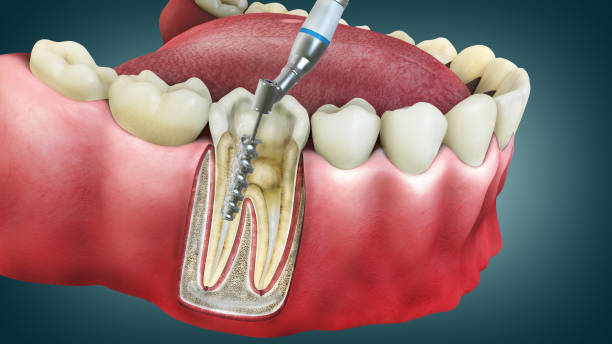When you hear the words “root canal”, one of the first things that may come to mind is pain. For years, root canal treatment has had a reputation for being one of the most painful dental procedures. But is that really true today?
In this blog, we’ll answer your biggest question: How painful is a root canal treatment? You’ll learn what the procedure involves, what to expect during recovery, and how modern dentistry has changed the experience for the better.
🦷 What Is a Root Canal Treatment?
A root canal treatment is a dental procedure used to save a tooth that is badly decayed or infected. Inside each tooth is a soft tissue called the pulp, which contains nerves and blood vessels. When this pulp becomes infected due to deep decay or trauma, it causes severe pain and sensitivity.
The root canal procedure involves:
- Removing the infected pulp
- Cleaning and disinfecting the inside of the tooth
- Filling and sealing the space
- Often finishing with a crown for protection
😬 How Painful Is a Root Canal Treatment?
✅ Before the Procedure: Numbing the Area
Modern root canal procedures begin with a strong local anesthetic to numb the area around the tooth. This means that during the treatment, you should feel little to no pain at all—just pressure.
Most patients say that getting a root canal feels similar to getting a filling.

✅ During the Procedure: Comfortable and Controlled
Thanks to modern tools and techniques, the process is much quicker and more precise than it used to be. Your dentist will ensure you’re comfortable throughout. If you feel any pain, additional anesthesia can be administered.
✅ After the Procedure: Mild Discomfort
It’s normal to experience some mild discomfort or sensitivity for a few days after the treatment as your body heals. This can often be managed with over-the-counter pain relievers like ibuprofen or acetaminophen.
💡 Tip: Follow your dentist’s aftercare instructions to avoid complications.

💡 How Long Does a Root Canal Last?
With proper care, a root canal-treated tooth can last 10–20 years or even a lifetime. Make sure to maintain good oral hygiene and visit your dentist for regular checkups.
🔍 Common Myths About Root Canal Pain
- Myth: Root canals are extremely painful.
Fact: Modern root canals are relatively pain-free. - Myth: It’s better to extract the tooth.
Fact: Saving your natural tooth is usually the better option long-term. - Myth: You’ll be in pain for weeks.
Fact: Most people return to normal activities within a day.
💰 Root Canal Cost and Insurance
The cost of a root canal depends on the tooth and where you live. Molars usually cost more due to complexity. Most dental insurance plans cover a portion of the procedure.
In the U.S., prices can range from:
- $500 to $1,500 for a front tooth
- $1,000 to $2,500 for a molar
📍 Root Canal Treatment Near You
If you’re searching for affordable root canal treatment in [ Anusha dental clinic,Palasa] or looking for the best root canal specialist near me, make sure to:
- Read online reviews
- Ask about sedation options
- Compare prices and services
📝 Final Thoughts
So, how painful is a root canal treatment? Thanks to advancements in dental technology, the answer is—not much at all. With proper anesthesia and a skilled dentist, a root canal is no more painful than getting a regular filling.
If you’ve been putting off treatment due to fear of pain, now is the time to take the next step toward a healthier smile.
📢 Call to Action
Ready to get relief from tooth pain? Book a consultation with your dentist today and learn if root canal therapy is right for you.
✅ Conclusion: How Painful Is a Root Canal Treatment?
If you’ve been wondering how painful is a root canal treatment, the truth is—it’s not nearly as painful as you think. Thanks to modern anesthesia, advanced dental tools, and experienced professionals, root canal procedures today are safe, efficient, and relatively pain-free.
While you might feel slight discomfort during recovery, the actual procedure is often no more uncomfortable than a standard filling. More importantly, it helps eliminate the intense tooth pain caused by infection and can save your natural tooth for years to come.
Don’t let fear hold you back. If you’re experiencing tooth pain or sensitivity, consult your dentist to see if root canal treatment is the right solution for you.
